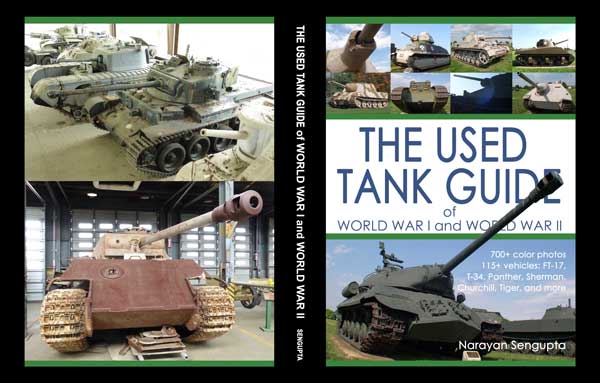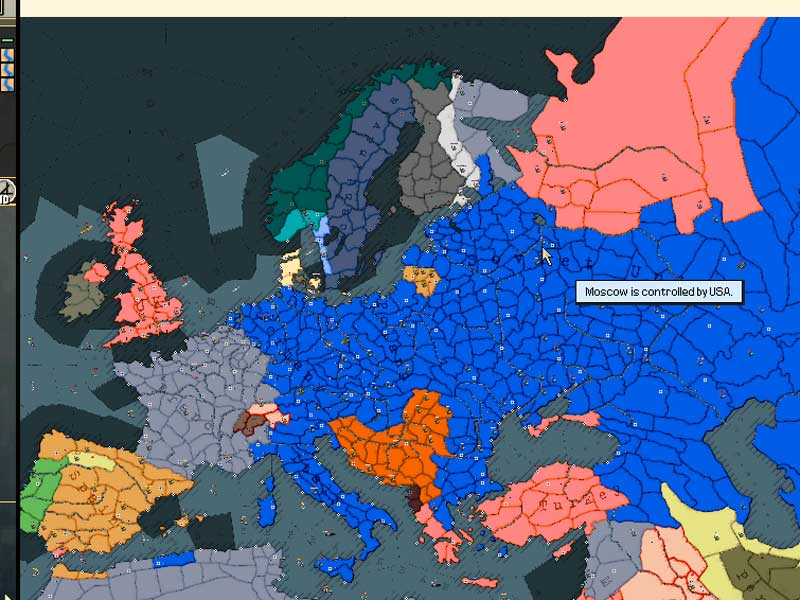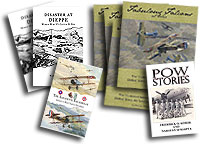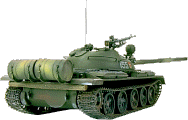PGIII Strategy Guide
by Philip Nelson
1: Killing AT Guns
Towed AT guns, when fully entrenched, can be a serious nuisance. However, they can be effectively removed at little cost to your forces. First, suppress the AT gun with artillery and/or bombers. Then attack it with infantry having the ability to ignore entrenchment, such as Pionere, Engineers, or Rangers. The AT gun will immediately retreat in its transport, where it can then be easily destroyed by almost any unit.
2: The Mobile Army
Some of the scenarios in Scorched Earth can only be won by exiting a certain number of units off of the map at specific locations. One way to win them quickly involves deploying a highly mobile army: one more fit for speedy feints and dashes than assaulting.
Recons and light tanks are ideal, as most need not follow roads to make full use of their usually high movement capabilities. All-terrain infantry and tracked units work well, too; and a good airforce, although you cannot use them to satisfy the victory conditions, can be very useful. Scout well, maneuver your army around any enemy strongpoints you encounter, and avoid prolonged battles. Victory should be fairly simple as long as the exit hexes are not heavily defended.
Of course, if there is plenty of time, by all means use the heavy assault package.
3: The Armor Equalizer: Infantry's Class Medal
The class medal for infantry leaders is 'Tactician', which makes every battle an infantry unit fights a close combat. Close combat in PG3 is similar to assaults in PG2: it involves battles in close terrain, such as cities, mountains, forests, etc. Infantry excell at that type of combat; however, other units, especially armored vehicles, perform very poorly in close terrain, and can be brutalized there by enemy infantry.
Now the panzer is king of open terrrain; but even the mighty Maus can be humbled there by GI's with 'Tactician'. Thus, if your armor is inferior to the enemy's, consider using infantry to attack, as they are often the easiest way to destroy armor with high ground defense values. But try to do so only after having weakened the enemy unit with bombers or artillery, as your infantry will take less damage.
It must be noted that while infantry specialists, such as Pionere or Rangers, have the best hard attack numbers of all infantry units, common infantry, such as Garrison or Motorized, will generally do quite a bit more damage to armor due to their much greater strength(15 vs. 8 or 10).
Just watch out for hidden artillery.
4: Giant Killer: Tanks' Class Medal
The class medal of tanks in PG3-SE is 'Blitz'. In a battle, it allows a tank to force the surrender of any adjacent unit that would have retreated as a result of the battle, regardless of terrain. In order to make the best use of this ability, choose your targets carefully. You want to force the surrender of units that would otherwise be very difficult to destroy. Units with high ground defenses, units with a high number of strength points, and infantry in close terrain fall into that category.
The first are usually heavy armor. Fully suppress them with bombers and heavy artillery. Next, any entrenchment they have must be removed, for they will not retreat otherwise. Tanks can normally entrench to level one. Since any attack on a fully-suppressed unit removes a level of entrenchment, attack the targeted enemy tank with a weak unit first, such as a recon, and then attack with your Blitz tank. Another option is simply to attack twice with your tank. The enemy will attempt to flee, but will be enveloped by your oncoming horde of panzers. Antitanks can be more troublesome, as they can normally entrench to level three. But as long as you have engineers handy, you should be able to quickly eliminate them.
The second kind of unit Blitz tanks are supremely suited to destroy are overstrengthed units, such as the common kinds of towed weapons and infantry. They are fairly simple to deal with, as all of them can be easily suppressed by artillery. Attack with engineers, and they will become prime targets for your tanks.
The third kind of target is infantry in close terrain. Tanks cannot do much damage even to suppressed infantry there; but with Blitz, they can force surrender anyway. Just make certain the infantry unit is fully suppressed and not entrenched.
One note: take care of all possible overruns first. Though they are very weak, even the last firing attributes of a Blitz tank can force surrender. Use your more powerful first shots to overrun, as the effectiveness will not diminish until you stop overrunning units. The 'Aimed Fire' veteran order, which allows your tank to once again fire at full power, can be of assistance in such situations.
As you can see, any tank with Blitz is a fearsome weapon indeed!
5: How to Fish: Baiting the Enemy in PG3
There are several ways of tempting the enemy into a trap in PG3. Most are risky endeavors. But there are good reasons to take those risks: mainly because you can win scenarios faster with more objectives captured, leading to a higher-quality army. I will detail two of the traps that can be set for an opponent. Many thanks to Wildcat, who taught them to me.
The Recon Bait tactic involves using a relatively expendable unit, the recon, to lure artillery and other defenders from their entrenched positions into open terrain where they can be easily attacked. This is most appropriate when tackling heavily-defended objectives, such as Leningrad, or objectives that cannot be easily flanked due to terrain, rivers, or other obstacles. Note that good scouting and a general knowledge of the state of the enemy's forces are essential for the successful execution of this tactic. If there are unseen enemy forces in the area, especially air units, your entire army could be in danger.
Once the region has been scouted, move the recon barely into the sighting range of the enemy. If the enemy forces have a recon in the area, it would be wise to eliminate or neutralize it, as it will be able to spot your army. Use at least two good artillery pieces with multiple support missions available to cover the recon; and if there are enemy two-range units lurking about, make certain the artillery can cover the hex beyond the recon. Also, it is usually wise to cover the recon with at least one good air-defense unit. Once a defensive perimeter has been set up around the artillery units, the trap is ready. Only the recon should be visible to the enemy forces; the rest of your army should be screened from view. Remember to not camouflage the recon....
If all goes well, the AI will figure it has an excellent chance of destroying the recon, move up its artillery to shell it, and then attack with whatever offensive ground units it has available. It also might attempt to strafe the recon, which is why an air-defense umbrella is a good plan. Even if tough tanks attack, the defending artillery should mostly suppress them, rendering them relatively impotent. The next turn should bring an excellent opportunity for destroying or neutralizing many units that would otherwise have been very difficult to attack, including the all-important artillery.
The Fighter Bait tactic is similar, albeit much simpler. Once again, good scouting is required as well as a general knowledge of the state of the enemy air-force. The goal is the neutralization of the enemy air-defense units guarding an objective.
Once the locations of the enemy AD units are known, fly a fighter into the spotting range of the enemy, but just outside the range of its air-defense. If all goes well, the AI will attempt to shoot down your fighter by moving its AD units forward. The next turn should bring an excellent opportunity for destroying or neutralizing those units, clearing the way for your bombers. Note that this can be more safely done in PG3-SE because of the penalty AD units suffer for moving and shooting.
6: Destroying Enemy Ground Units in Unfavorable Circumstances
In this article we will have a look at various methods of destroying ground units from each class while sustaining the least amount of damage possible. In most cases involving such units, suppressing the targeted unit, removing its entrenchment, and forcing surrender is the preferred technique. However, that is not always possible, for whatever reason. The following deals with how to kill or neutralize enemy units without using suppression, assuming that enemy artillery support has already been dealt with. If it has not, then any attack not on the supporting artillery is probably suicidal. It would be better to wait, in most cases, and either attempt to lure out the defending artillery, or prepare for an attack on it next turn.
Infantry can be very difficult to damage in cities and other close terrain without artillery or bombers. However, your own infantry can lend support to units that would otherwise be manhandled by the enemy infantry. If armor engaging an infantry unit in close combat is adjacent to a friendly infantry unit, the battle proceeds as if it were a regular combat, which usually favors armor. After using armor to soften up the enemy infantry, your own infantry can often finish them. Naturally, infantry in regular terrain can be easily dealt with by armor, as long as they are not Tactician infantry. If they are, then infantry support will be required. Note that offensive infantry support trumps Tactician on defense; and note that infantry support does not apply in any defensive situation, only on offense. Note also that air-defense units can sometimes perform quite well against infantry.
Tanks can be very difficult to kill, especially when your own are outclassed. Tactician infantry are probably the best way to kill an unsuppressed heavy tank; they can reduce a Maus to a decent-sized junkyard without too much trouble, regardless of enemy infantry support. And even if you don't have Tactician infantry, catching an enemy tank in close terrain with infantry has the same effect. Note that the higher-strength infantry you use, the more damage you will do-though you may take more damage as well.
Now, if you can't use infantry to knock out an enemy tank, the only other option available is to use your own tanks and anti-tanks against it. If it is quite a bit better than anything you can field, don't try to kill it; just try to destroy 25% of its strength points. Apparently the AI will always try to refit a unit in that circumstance, unless it's a garrison unit or an airplane without an airfield. Leave a unit next to the damaged tank, and it will retreat. If you do not, it will refit in that hex. Either can be a good option, depending upon how long it will take to get bomber or artillery support. Note that early AD units are two-range, while early tanks are not. If you can out-range armor, it is often possible to 'pin' the enemy units with 25% damage until help arrives.
Self-propelled anti-tanks are fairly similar to tanks, except that they can have high entrenchment levels. If they are at level three or four entrenchment and out-class your units, the only effective way of disposing of them without using suppression is through close combats, preferably using engineering infantry. Once again, you could simply attempt to damage 25% of the enemy unit, as it will most likely leave your units alone for at least one turn. Towed AT guns can sometimes be a bit harder for infantry to handle, probably due to higher strength; but close combats are again the best solution in tough situations.
Recons tend to be fragile, and can be destroyed in close combats or by good armor. They can essentially be viewed as weak tanks.
Artillery are highly vulnerable to close combats or armor. Even recons can sometimes take a bite out of artillery. It may seem odd attacking artillery with infantry; but they annihilate artillery in close terrain without sustaining much damage at all.
Air-defense units can be divided into four classes. There are the big towed guns, such as the 88mm or the 85mm cannons. They should be engaged in close-combats only. Infantry can tear them up with few casualties, but those guns can significantly damage tanks. Then there are the small towed guns, such as the 20mm Quad. They should usually be handled by armor, as infantry can be heavily wounded by them. Next, there are self-propelled big guns, such as the ZIS/85. While armor can defeat them, it is probably better to use close combats. Those units are rare, however; and shouldn't be much of a problem. Finally, there are self-propelled small guns. These should almost never be attacked by infantry; but armor can engage them with ease.
Forts are tough; but engineers can easily handle them, though they will probably sustain casualties in the process. Also, two-range units can chip away at forts without fear of counter-attack; and if one is heavily damaged, armor can destroy it. Waiting until a bomber is available can sometimes be the best plan, however.
Note that when attempting to destroy an enemy unit with only one or two strength points left, nearly anything can be used without much regard to possible casualties, as long as it is actually possible to damage the enemy unit. For instance, you probably shouldn't try to use an M17 to finish off an unsuppressed King Tiger. Regardless, it is sometimes best to wait until the next turn so as to avoid losing valuable fire and movement attributes.
Also note that apparently all trucks can shoot back; and infantry are particularly susceptible to them. Lastly, to know for certain whether or not it is a good idea to attack a unit in close terrain with infantry, check the enemy unit's close combat number. If it is around five, your infantry will probably be significantly damaged if they attack. If it is around two, they will probably be all right.
7: Maintaining a Defensive Perimeter in PG3
In this article we will examine ways to maximize a battle-group's defenses in the midst of an offensive. Little is more frustrating in PG3 than watching as enemy forces seriously damage an artillery piece you were counting on to crack open a tough defense. Now, there are four key areas involved in maintaining a good defensive perimeter: battle-group composition, scouting, battle-group formation, and preemptive strikes.
Battle-group composition involves the classes, number, and quality of units in a task force. Not much needs to be said about quality; a Tiger is obviously better than a Pz IVH. The only thing of which to be aware is the strength of units.
Perhaps most important in composition are the classes of units that form a battle-group. Armor, artillery, and air defense are key on defense. Recons and infantry can be useful in screening and in keeping weaker units from being attacked, but in a pitched battle it's the others that count. Now, a good task force should have at least one of each of the key classes, with preferably multiple units of armor and artillery. If a unit from one of those classes is not present, there is a good chance the enemy will exploit the weak area.
Scouting is very important, as it allows you to discover the location and strength of enemy forces. With that information, you can determine whether or not a defensive stance is necessary. Usually, enemy ground forces four to eight hexes away (one-range units to four-range artillery) can be considered dangerous unless they are garrisoning an objective; and enemy units seven to eleven hexes away can be considered suspect. Anything else, except air units, will probably not engage your forces on their next turn.
Battle-group formation involves the way units are positioned on the battlefield. Before the advent of two-range armor, it is fairly easy to maintain a good defensive posture. At the end of a turn, simply position armor directly in front of artillery, and use weaker units such as infantry to guard against flank attacks. After two-range armor becomes prevalent, place your armor two hexes in front of the artillery, as a favorite tactic of the enemy is shooting over your front-line units at artillery. Note that four-range artillery works best in that formation, though three-range is usually sufficient. Recons should be placed within two hexes of as many front-line units as possible in order to provide screening; and air defense should usually be placed as far back as possible, while still covering the entire battle-group. In tough situations, air defense units and recons can be used as front-line units. The last, and probably most important point, is that the formation should be facing the area of the greatest perceived threat.
Preemptive strikes involve identifying the most dangerous enemy units on your turn, and neutralizing them. Artillery and armor are usually the main threats. Against the AI, all you need to do is kill 20% of a unit's strength points; and it will most likely either refit or retreat. Against a human, it is still sometimes useful, as it can destroy unit attributes- which presents your oppenent with an interesting dilemma. But knowing when to do so is important because it can waste firepower and overextend your forces. In general, if you can kill most of the enemy units in a sector, one tank or artillery piece usually isn't a problem, unless you have a weak unit exposed. However, if your forces have just arrived in a target-rich environment and are low on movement and actions, neutralizing enemy units is probably a good plan.
All four categories are fairly equal in importance in PG3-SE; but due to the bonuses for multiple-slot leaders in PG3D, preemptive strikes in that game are incredibly powerful compared to the other defensive factors in mid-to-late campaign action. By the way, note that reserve fire toughens a defensive line considerably.
Philip Nelson

 Home
Home Hearts of Iron
Hearts of Iron








 French Military Victories...
French Military Victories...